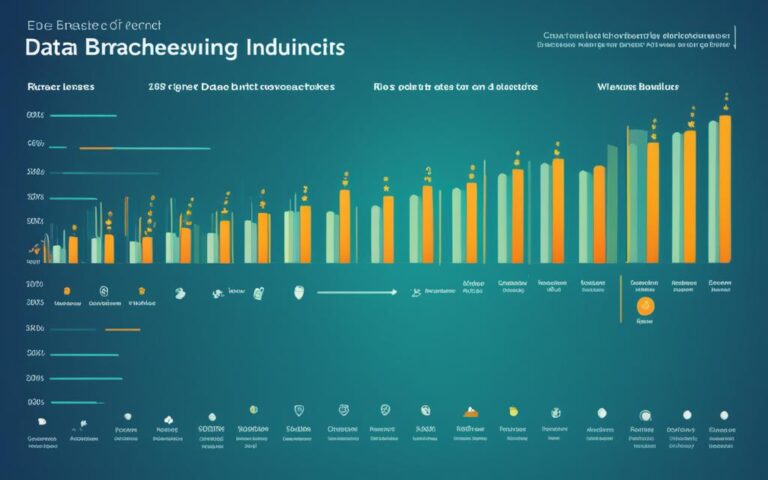Best Practices in Electronic Data Disposal
Electronic data disposal, also known as secure data disposal, is a critical aspect of data management and protection. As organizations generate and consume vast amounts of data, it becomes increasingly important to prioritize the secure disposal of electronic data. Neglecting this process can leave companies vulnerable to data breaches and significant financial loss. In this article, we will explore the best practices in electronic data disposal and highlight the key steps to ensure secure and compliant data disposal.
One of the main reasons to focus on electronic data disposal is to protect sensitive information. Data breaches can have severe consequences, including damage to a company’s reputation and legal repercussions. To prevent such incidents, organizations need to implement robust security measures and follow best practices in data disposal.
Proper electronic data disposal involves compliance with data protection regulations and the use of trusted security methods. By implementing a comprehensive data disposal policy and following industry best practices, organizations can minimize the risk of data breaches and maintain the trust of their stakeholders.
In the next sections, we will delve deeper into the reasons to dispose of data, the methods available for secure data disposal, when to dispose of data, and the different stakeholders responsible for data disposal. We will also discuss the challenges and risks associated with data disposal and outline the best practices to ensure secure and compliant data disposal.
So, let’s explore the world of electronic data disposal and discover the best practices to protect your valuable information.
Why Dispose Data?
Data disposal offers several benefits to both individuals and organizations. First, it frees up storage space and improves the performance of devices and systems. Second, it reduces the risk of data breaches and identity theft by preventing unauthorized access to unnecessary data. Third, it helps organizations comply with data protection regulations, such as the GDPR or CCPA, which require the deletion of data when it is no longer needed. Lastly, proper data disposal demonstrates respect for data subjects’ rights and preferences, enhancing trust and reputation.
When data accumulates and is not properly managed, it can become a burden, clogging up storage systems and slowing down processes. By disposing of unnecessary data, organizations can create more space for new and relevant information, leading to improved efficiency and productivity.
Data breaches and identity theft pose significant risks to individuals and organizations. By disposing of data that is no longer needed, organizations can minimize the chances of unauthorized access to sensitive information. This proactive approach to data protection safeguards privacy and helps maintain the trust of customers, clients, and stakeholders.
Compliance with data protection regulations is crucial in today’s data-driven landscape. The GDPR and CCPA, among other regulations, require organizations to delete data when it is no longer necessary for the purpose it was collected or the consent has been withdrawn. By disposing of data in compliance with these regulations, organizations can avoid legal issues and potential penalties.
Lastly, proper data disposal is essential for demonstrating respect for data subjects’ rights and preferences. When individuals share their personal information with organizations, they expect it to be handled responsibly. By disposing of data when it is no longer required, organizations show that they prioritize data protection and respect the privacy of their customers or clients. This, in turn, enhances trust, strengthens relationships, and bolsters reputation.
In summary, data disposal offers numerous benefits, including freeing up storage space, reducing the risk of data breaches, ensuring compliance with data protection regulations, and demonstrating respect for data subjects’ rights and preferences. By adopting proper data disposal practices, organizations can improve efficiency, protect sensitive information, and maintain trust in an increasingly data-centric world.
How to Dispose Data?
Data disposal involves various methods, each tailored to the type of data and level of security required. By selecting the appropriate method, organisations can ensure secure data deletion and data destruction, safeguarding sensitive information and complying with data protection regulations.
Data deletion is a common method used to remove data from a device. While it eliminates data from visibility, it may not completely erase it. As a result, data recovery is still possible, posing potential risks of unauthorized access or data breaches.
Data destruction offers a more comprehensive solution. This method involves physically damaging or destroying the device or media, rendering the data irrecoverable. By permanently destroying the storage medium, data breaches can be effectively prevented.
Data wiping is another secure data deletion method. It involves overwriting the data multiple times, making it unrecoverable. This process ensures that the original data is replaced with random information, rendering it practically impossible to retrieve.
Data encryption is an effective method that transforms data into an unreadable format. By encrypting the data using robust algorithms and keys, it becomes indecipherable to unauthorized individuals. This method provides an additional layer of security, especially during data disposal.
The choice of data disposal method should be based on the sensitivity of the data and the desired level of permanence. Highly confidential or sensitive data may require a combination of methods to ensure maximum protection.
Implementing a secure data deletion process is essential to prevent data breaches and protect sensitive information. By utilizing appropriate data disposal methods, organizations can mitigate risks and maintain compliance with data protection regulations.
Sample Data Disposal Methods Comparison Table:
| Data Disposal Method | Level of Security | Permanence |
|---|---|---|
| Data Deletion | Low | Partial |
| Data Destruction | High | Incomplete |
| Data Wiping | High | Irreversible |
| Data Encryption | High | Irreversible |
When to Dispose Data?
Data disposal should be guided by a clear policy that defines when data should be disposed of. To ensure compliance and protect sensitive information, organizations must consider several factors:
- The purpose and value of the data
- Retention schedules
- Risk assessment
When data has fulfilled its purpose or lost its relevance, prompt disposal is necessary to prevent unnecessary storage and potential security risks. Additionally, data with defined retention periods should be disposed of when those periods expire to maintain compliance and minimize liability.
High-risk data, such as personally identifiable information (PII) or financial records, should be handled with caution to avoid breaches or unauthorized access. These types of data may require special attention and additional security measures during the disposal process.
Compliance with data protection regulations, such as FERPA, IDEA, or GDPR, is crucial in determining when and how to dispose of data. Organizations must be aware of the legal requirements and responsibilities outlined in these regulations to ensure compliance and protect individuals’ privacy rights.
Creating a comprehensive data disposal policy that addresses these considerations is essential for organizations to effectively manage their data lifecycle and maintain compliance with relevant regulations. Regular reviews and updates to the policy, as well as ongoing staff training and awareness, are crucial for maintaining a proper data disposal process.
| Factors to Consider | Importance |
|---|---|
| Purpose and value of the data | High |
| Retention schedules | High |
| Risk assessment | High |
| Compliance with regulations | High |
Having a clear data disposal policy ensures a systematic and compliant approach to data management and disposal. By considering the factors mentioned above, organizations can establish a standardized process that promotes secure data disposal and minimizes the risk of data breaches and regulatory non-compliance.
Who is Responsible for Data Disposal?
Data disposal is a shared responsibility among different stakeholders involved in the data lifecycle. Each stakeholder has a distinct role in ensuring effective and secure data disposal. Let’s explore the responsibilities of data owners, data users, and data subjects in the disposal process.
Data Owners
Data owners play a crucial role in data disposal. They are responsible for defining disposal policies, setting retention schedules, and ensuring the quality of the data. Data owners need to establish clear guidelines on when and how data should be disposed of, taking into account legal requirements and the organization’s specific needs. By proactively managing data disposal, data owners can protect sensitive information and maintain compliance with data protection regulations.
Data Users
Data users, including employees and authorized individuals, have a significant responsibility in executing data disposal activities. They must adhere to the disposal policies defined by data owners and use appropriate disposal methods. Data users should have a clear understanding of the importance of secure data disposal and the potential risks associated with improper disposal. By following established guidelines and reporting disposal activities, data users contribute to maintaining data security and compliance.
Data Subjects
Data subjects, the individuals whose personal data is processed, also have a role to play in the disposal process. They have the right to express preferences regarding their data, monitor compliance with data protection regulations, and exercise their rights, such as the right to be forgotten or the right to data portability. By actively participating in the disposal process and staying informed about their rights, data subjects contribute to the responsible management and disposal of their data.
In summary, collaboration and coordination among data owners, data users, and data subjects are essential for effective and secure data disposal. Each stakeholder must fulfill their specific responsibilities to ensure compliance with regulations, protect sensitive information, and maintain trust in the data management process.
Challenges and Risks of Data Disposal
Data disposal introduces various challenges and risks that necessitate effective management. It is important to address these risks to ensure the secure and responsible disposal of data.
Data loss is a significant risk associated with data disposal. Whether caused by accidental deletion or intentional actions, data loss can lead to operational disruption and potential missed opportunities. To mitigate this risk, implementing proper backup and validation processes is crucial.
Data leakage poses another significant challenge in the disposal of data. Leaked data can result in privacy breaches and compromise the security of individuals and organizations. To prevent data leakage, appropriate disposal methods and tools must be employed, ensuring the complete destruction or transformation of sensitive data.
Furthermore, the improper disposal of devices containing hazardous materials can have negative environmental and safety implications. Disposing of electronic devices in landfills can contaminate soil and water sources, endangering both human health and the environment. Thus, it is essential to adhere to environmental standards and engage in responsible disposal practices.
To effectively address the challenges and risks of data disposal, compliance with relevant regulations is paramount. Organizations must align their disposal practices with data protection regulations to safeguard the privacy of individuals and ensure legal compliance. By implementing responsible disposal practices, organizations can mitigate risks and protect sensitive data from unauthorized access or exposure.
Data Disposal Best Practices
Following best practices is crucial for secure and compliant data disposal. By implementing these recommendations, organizations can protect sensitive information, mitigate the risk of data breaches, and ensure compliance with data protection regulations such as FERPA or GDPR.
- Use reputable software for secure deletion: When disposing of digital data, it is important to use trusted software tools that ensure complete and secure deletion. These tools employ advanced algorithms to overwrite data and make it unrecoverable, minimizing the risk of unauthorized access.
- Implement a data retention policy: Establishing a clear data retention policy is vital for determining when data should be disposed of. The policy should define the purpose and value of the data, retention periods, and the criteria for disposing of data that is no longer needed. This ensures that data is retained only as long as necessary, reducing storage costs and the potential for data breaches.
- Conduct regular audits to identify and remove unnecessary data: Regularly reviewing and auditing data storage systems helps identify and eliminate unnecessary data that may pose security risks. By regularly purging outdated or redundant data, organizations can reduce the attack surface and enhance data security.
- Educate employees on proper disposal procedures: Employee awareness and training play a crucial role in data disposal best practices. Training programs should educate employees on the importance of secure data disposal, provide clear instructions on disposal methods, and raise awareness about potential risks associated with improper disposal.
- Ensure compliance with regulations: It is essential to stay up-to-date with relevant data protection regulations and ensure compliance in data disposal processes. This includes complying with regulations such as FERPA or GDPR, which mandate the secure disposal of personal and sensitive data.
- Utilize encryption when disposing of digital media: Encrypting digital media prior to disposal adds an additional layer of security. Encryption ensures that even if the media falls into the wrong hands, the data remains unreadable and protected. Organizations should adopt encryption practices for digital media storage devices such as hard drives, USBs, and SSDs.
- Consider physical destruction for hardware: In some cases, physical destruction may be the most secure method of disposing of hardware that stores sensitive data. Properly destroying hard drives, tapes, or other storage devices ensures that the data they contain cannot be recovered. Organizations should partner with certified vendors who specialize in secure physical destruction methods.
- Document disposal processes and obtain proper authorization: Maintaining a documented record of disposal processes is essential for audit purposes and demonstrating compliance. This includes documenting the disposal methods used, the date and time of disposal, and obtaining necessary authorizations or approvals from relevant stakeholders.
- Monitor third-party vendors involved in disposal: If outsourcing data disposal to third-party vendors, organizations should conduct due diligence to ensure that these vendors follow secure and compliant data disposal practices. Regularly monitoring and evaluating the performance of these vendors is important to maintain data security and compliance.
By adhering to these best practices, organizations can confidently dispose of data in a secure and compliant manner, protecting sensitive information, minimizing the risk of data breaches, and ensuring regulatory compliance throughout the data lifecycle.
Conclusion
Effective and secure data disposal is crucial for safeguarding sensitive information and ensuring compliance with data protection regulations. By adhering to best practices in data disposal, organizations can significantly reduce the risk of data breaches, maintain trust with stakeholders, and avoid potential legal and financial consequences.
All stakeholders, including data owners, users, and subjects, play essential roles in the data disposal process. It is important to regularly review and update disposal procedures to align with evolving threats and regulations. Staying informed about the latest industry practices and prioritizing responsible disposal practices are key to successful data disposal.
Remember, proper data disposal is an integral part of effective data management and protection. Organizations should implement reputable software for secure data deletion, establish a data retention policy, perform regular audits to identify and remove unnecessary data, and provide comprehensive training to employees on proper disposal procedures. Additionally, compliance with data protection regulations, such as FERPA or GDPR, should be a top priority.
In summary, to ensure the security and integrity of data, organizations must adopt best practices in data disposal. By doing so, they will be well-equipped to navigate the ever-changing landscape of data protection and maintain a strong foundation of trust and compliance.
FAQ
What are the best practices for electronic data disposal?
The best practices for electronic data disposal include using reputable software for secure deletion, implementing a data retention policy, conducting regular audits to remove unnecessary data, and educating employees on proper disposal procedures.
Why should we dispose of data?
Disposing of data offers several benefits, such as freeing up storage space, reducing the risk of data breaches and identity theft, complying with data protection regulations, and demonstrating respect for data subjects’ rights and preferences.
How can we dispose of data?
Data can be disposed of through methods such as data deletion, data destruction, data wiping, and data encryption, depending on the sensitivity of the data and the desired level of permanence.
When should data be disposed of?
Data should be disposed of when it has fulfilled its purpose, lost its relevance, or when defined retention periods expire. High-risk data should be handled with caution to avoid breaches or misuse.
Who is responsible for data disposal?
Data disposal is a shared responsibility among different stakeholders. Data owners are responsible for defining disposal policies, data users must follow these policies and execute disposal methods, and data subjects have the right to express preferences and monitor compliance.
What are the challenges and risks of data disposal?
Data disposal presents challenges such as accidental or intentional data loss, data leakage posing privacy and security risks, and improper disposal of devices with hazardous materials. Compliance, responsible practices, and adherence to environmental standards are essential in addressing these challenges and risks.
What are the best practices for data disposal?
Best practices for data disposal include using reputable software, implementing a data retention policy, conducting regular audits, and educating employees. Compliance with regulations, encryption, physical destruction, proper documentation, authorization, and monitoring third-party vendors involved in disposal are also important.
Why is effective and secure data disposal important?
Effective and secure data disposal is essential for protecting sensitive information, minimizing the risk of data breaches, maintaining trust with stakeholders, and avoiding legal and financial consequences.
Conclusion
Proper data disposal is an integral part of effective data management and protection. By following best practices, organizations can ensure secure and compliant data disposal, reducing the risk of data breaches and maintaining trust with stakeholders.













